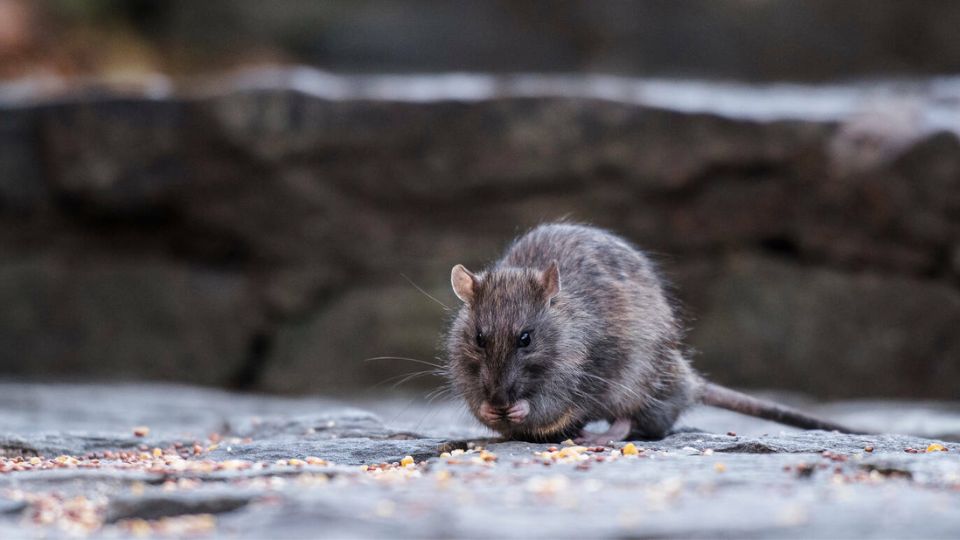New York City is famous for being called the “Big Apple,” but it also has a significant issue with rats. Rodents are frequently seen in various parts of the city, and their numbers have been increasing in recent years. This issue goes beyond aesthetics and culture, extending into the realm of public health and potential property damage due to disease spread.
Rats do well in environments with water, food, and shelter. Rats can be a health hazard to humans due to the contamination of food and spread of disease through their waste and saliva.
New York City’s rat population has surged, ranking it as the third rattiest city in America, with Chicago and Los Angeles taking the top two spots. Identifying the neighborhoods most impacted by rat infestations is crucial as the problem grows in the city.
Due to the abundance of leftover food discarded by the city’s approximately 25,000 restaurants, rats have ample resources to thrive and reproduce. By implementing appropriate measures, New Yorkers can effectively combat the increasing rat population in the city.
This information is valuable for city officials and residents to address rat populations and enhance the quality of life in these areas. This blog post will delve into the neighborhoods in New York City experiencing the highest levels of rat infestations.
Overview of Rats in New York City
Rats have been a persistent issue in New York City. Actually, the city houses two types of rats: the Norway rat (brown rat) and the roof rat (black rat). The Norway rat is the more prevalent of the two and can reach a length of up to 18 inches, tail included. The color is either brown or gray, with a blunt nose and small ears.
In contrast, the roof rat is smaller, typically measuring around 6 to 8 inches in length, with a pointed nose and large ears. Rats are recognized for their ability to adapt and thrive in various environments, which makes them ideal for urban living.
You can locate them in parks, alleys, sewers, subways, and even in people’s homes. Rats are drawn to places with convenient access to food and water, so garbage cans and overflowing dumpsters become popular spots for them. Lately, there has been an increase in rat infestations in New York City. In 2017, the city’s 311 hotlines got more than 17,000 complaints about rats, which was a 10% increase from the year before.
Neighborhoods in NYC with the most rats
Some NYC neighborhoods reportedly have more rats than people. Officials estimate that there are approximately 2 million rats in the city, although it is impossible to know for sure. New York City neighborhoods with the most rats are typically found in Manhattan, Brooklyn, and the Bronx. Based on the statistics, the following neighborhoods had the highest number of rat sightings per capita in 2020:
- Manhattan’s Chinatown/Lower East Side
- Located in Manhattan, the East Village
- Bushwick in Brooklyn
- Located in Brooklyn, Bedford-Stuyvesant
- Belmont (Bronx)
- Located in East New York, Brooklyn
- Mott Haven in the Bronx
- Highbridge in the Bronx
- Brownsville in Brooklyn
- University Heights in the Bronx
These neighborhoods are recognized for their high population densities and abundance of restaurants, which may draw rats seeking food. They also possess older building stock that may have structural problems allowing rats to enter. Moreover, a number of these communities feature a substantial amount of public housing, which may be challenging to upkeep and susceptible to maintenance problems that can attract rodents.
Also Read: 3 New Jersey Cities Crawling With Most Infested Bed Bugs in 2024
Dealing with Rat Infestations in NYC
Tackling rat problems in New York City will involve a comprehensive strategy involving both prevention and specific actions. Here are a few possible solutions:
1. Enhance Sanitation
One effective method to control rat populations is by decreasing the availability of food and water. One way to accomplish this is by making sure trash is disposed of correctly, eliminating sources of standing water, and maintaining cleanliness in public areas.
2. Resolve Structural Problems
By identifying and fixing structural problems in buildings, like sealing cracks and gaps, you can keep rats from getting inside and making nests.
3. Implement Pest Control Measures
One way to control pests is by using traps, baits, and pesticides. These measures should be implemented by licensed professionals and utilized in a focused and environmentally conscious way.
4. Inform the Public
Public education efforts can play a crucial role in increasing awareness about the dangers of rat infestations and encouraging effective prevention and control measures. Information should cover proper trash disposal, keeping the environment clean, and reporting rat sightings to the right authorities.
5. Embrace Community-Based Solutions
One way to address community issues is by arranging local cleanups, setting up community gardens, and encouraging composting to minimize food waste.
6. Encourage Responsible Pet Ownership
Promoting responsible pet ownership, like picking up after pets and storing pet food correctly, can decrease the food supply for rats.



Leave a Reply